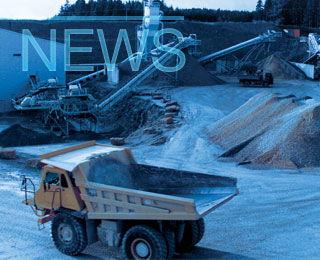The structure and conduct of the UK cement sector restricts competition, costing consumers around GBP50m annually, and therefore requires decisive market intervention, according to the conclusions of the two-year investigation by the UK’s Competition Commission published this week. The investigation did not, however, identify any problems with the markets for aggregates or RMC.
The Commission’s report sets out a series of remedies it claims will increase competition in an effort to provide better value for money to consumers, with Lafarge Tarmac and Hanson both being told they will have to sell off assets.
The recently formed Lafarge Tarmac JV will be required to divest either its Cauldon works in Staffordshire, or the Tunstead plant in Derbyshire, only a year after Lafarge divested its Hope works to Mittal to meet the conditions set by the Competition Commission for the creation of the new JV.
Unsurprisingly, Cyrille Ragoucy, CEO of Lafarge Tarmac, offered a scathing assessment of the report, describing it as ‘flawed’ and ‘not reasonable or proportionate’ and arguing that it had “failed to take into account the new business environment that has been established by our divestments – only 12 months ago – to create a new competitor, and the entry of new importers into the market.”
The Commission has also targeted the market for GGBS, arguing that the existence of only one domestic producer in GB, namely Hanson, has also led to unacceptably high prices for consumers. Hanson will be required to divest one of its three active GGBS production facilities at Purfleet, Port Talbot or Scunthorpe, with the latter recommended as the most likely.
Is the ruling fair?
The Commission’s Chairman, Professor Martin Cave, believes so: "Despite falling demand and increasing costs during the last few years, profitability among GB (British) producers has been sustained and their respective markets shares have changed little," he said. “This is not what you would expect to see in a well-functioning market, under these circumstances.”
Indeed, at GBP70/t (EUR87/t) in 2011, cement prices have been amongst the highest in Western Europe, second only to France.
But the solution does not seem to lie in further fragmenting the market. The GB cement industry is not overly concentrated, with four integrated producers, namely Lafarge Tarmac, Hanson, Cemex and Hope Construction Materials, controlling 12 plants and 12.9Mta production capacity.
Furthermore, a total of 10 individual companies supply the market, taking into account imports which historically have accounted for 15-20 per cent share of domestic consumption. These importers consist not only of the global majors, such as Holcim (Switzerland), CRH (Ireland) and Titan (Greece) importing product via their respective subsidiaries, but also smaller independent operations including Brett Group, Thomas Armstrong Ltd and Sherburn.
What next?
Lafarge Tarmac and Hanson are challenging the ruling, and if past appeals in the sector are anything to go by, it could be several years before the issue is resolved.
If the decision stands, and Lafarge Tarmac and Hanson are forced to sell assets, the Commission has stipulated that the buyer cannot be one of the country’s existing cement producers. This could pave the way for Holcim to make a bid, given that it is already active in the GB aggregates and RMC markets through its subsidiary Aggregate Industries. Alternatively, Breedon Aggregates could make a strong business case for adding a cement or slag production asset to its portfolio, and become a fully integrated player.
In the meantime, as new market entrant Hope Construction Materials celebrates its first anniversary, the GB cement market continues to recover, with 2013 consumption set to achieve a growth rate of around four per cent. Moreover, a forecast by the UK's Construction Products Association predicts that domestic construction activity will grow every year between 2014 and 2017, providing welcome optimism for the sector following the deepest recession in decades.

Brazil's cement market expands 5% in March
Cement sales in Brazil increased 5.2 per cent YoY to 5.265Mt in March 2025 from 5.006Mt in March...